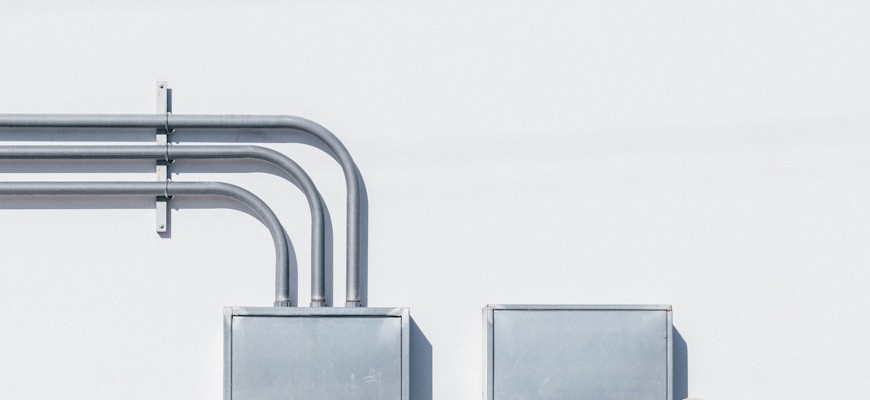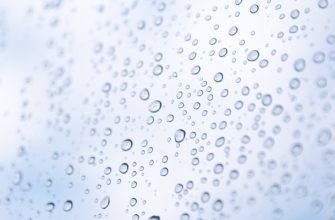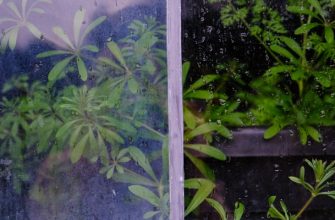- Understanding the Basics: How Air Purifiers Work
- The Evolution of Air Purification: Historical Perspectives
- Types of Air Purification Technologies: A Comprehensive Overview
- Filters vs. Ionizers: Pros and Cons of Each Method
- Innovations in Air Quality: Emerging Technologies in Purification
- Choosing the Right Air Purifier: Factors to Consider for Your Space
Understanding the Basics: How Air Purifiers Work
Understanding how air purifiers function is essential for selecting the right device for improving indoor air quality. Air purification technologies vary significantly, employing different methods to eliminate pollutants, allergens, and harmful particles. The most common air purification methods include mechanical filters, activated carbon filters, and ionizers.
- Mechanical Filters: These devices utilize physical barriers to trap particles from the air. HEPA (High-Efficiency Particulate Air) filters are particularly effective, capturing up to 99.97% of particles as small as 0.3 microns, including dust, pollen, and pet dander.
- Activated Carbon Filters: These filters adsorb odors and volatile organic compounds (VOCs) through a process called adsorption. They are particularly useful in removing harmful gases and unpleasant smells from the air.
- Ionizers: Ionizers work by charging particles in the air, causing them to clump together and fall to the ground or stick to surfaces. This method can help reduce airborne pollutants, but it may produce ozone as a byproduct, which can be harmful in high concentrations.
Each air purification technology has its strengths and weaknesses. Mechanical filters are highly effective for particulate matter, while activated carbon filters excel in odor removal. Ionizers can be beneficial for reducing airborne particles but require careful consideration due to potential ozone production. By understanding these technologies, individuals can make informed decisions about which air purifier will best suit their needs.
In summary, air purifiers play a crucial role in enhancing indoor air quality. By utilizing various technologies such as mechanical filters, activated carbon filters, and ionizers, these devices can effectively reduce pollutants, allergens, and odors. Choosing the right air purification method is key to creating a healthier living environment.
The Evolution of Air Purification: Historical Perspectives
The evolution of air purification technologies has undergone significant transformations over the centuries. Initially, ancient civilizations relied on simple methods of air cleaning, such as the use of herbs and natural ventilation. These early practices laid the groundwork for more advanced air purification systems that emerged later.
During the Industrial Revolution, the need for improved air quality became more pressing. Factories and urbanization contributed to rising pollution levels, prompting innovations in air purification. The introduction of basic filter systems, which used cloth and mesh materials, marked a pivotal moment in air cleaning technology.
- Early Filters: Constructed from simple materials, these filters captured larger particles but were limited in effectiveness against finer pollutants.
- Activated Carbon Filters: Developed in the early 20th century, these filters utilized the adsorptive properties of carbon to trap odors and harmful gases.
- HEPA Filters: Introduced in the 1950s, High-Efficiency Particulate Air (HEPA) filters were designed to capture at least 99.97% of particles, significantly enhancing air quality in both residential and industrial settings.
As knowledge of air purification expanded, technologies evolved to include advanced methods such as ultraviolet (UV) light purification and ionization. UV systems target microorganisms, effectively reducing pathogens in the air. Ionizers, on the other hand, work by charging air molecules, causing them to clump together and settle, thus removing airborne impurities.
Modern air purification devices combine various technologies to create multi-faceted systems capable of addressing a wide range of air quality issues. This evolution reflects an ongoing commitment to improving indoor air quality for health and wellness, adapting to the growing understanding of the impact that clean air has on overall quality of life.
In conclusion, the historical progression of air purification technologies showcases a remarkable journey from rudimentary methods to sophisticated, multi-functional systems. This evolution continues to shape the way individuals and communities address air quality challenges today.
Types of Air Purification Technologies: A Comprehensive Overview
Air purification technologies play a crucial role in enhancing indoor air quality. Various methods have been developed to eliminate pollutants, allergens, and harmful particles from the air. Understanding these technologies helps consumers make informed choices for cleaner air in their homes and workplaces.
- HEPA Filters: High-Efficiency Particulate Air (HEPA) filters are designed to capture at least 99.97% of particles that are 0.3 microns in size. They are highly effective against dust, pollen, and pet dander.
- Activated Carbon Filters: These filters utilize activated carbon to adsorb odors, gases, and volatile organic compounds (VOCs). They are particularly useful in removing unpleasant smells from cooking, pets, and smoke.
- UV Light Purification: Ultraviolet (UV) light purification systems use UV light to kill bacteria, viruses, and other microorganisms. This technology is often used in conjunction with other purification methods for enhanced effectiveness.
- Ionic Purifiers: Ionizers release negatively charged ions into the air, which attach to positively charged particles, causing them to fall to the ground. This process helps reduce airborne pollutants but may produce ozone as a byproduct.
- Ozone Generators: These devices produce ozone gas that can eliminate odors and kill certain pathogens. However, high levels of ozone can be harmful to health, making their use controversial.
- Photocatalytic Oxidation: This advanced technology uses a combination of UV light and a photocatalyst to break down pollutants at a molecular level. It effectively reduces VOCs and other harmful compounds in the air.
Each air purification technology offers unique benefits and drawbacks. For optimal air quality, it may be beneficial to combine different types of purification systems. The choice of air purification technology depends on specific needs, such as the type of pollutants present and the desired level of air cleanliness.
Filters vs. Ionizers: Pros and Cons of Each Method
When it comes to air purification technologies, both filters and ionizers offer distinct methods for improving indoor air quality. Understanding the pros and cons of each approach can help in making an informed decision for cleaner air.
- Filters:
- Efficiency: Air filters are highly effective at capturing particulate matter such as dust, pollen, and pet dander. HEPA filters, for example, can trap up to 99.97% of particles that are 0.3 microns in size.
- Maintenance: Regular replacement of filters is necessary to maintain efficiency. Neglecting this can lead to reduced performance and poor air quality.
- Cost: Initial costs for filter systems may be higher, but long-term benefits often outweigh these expenses due to their effectiveness in trapping allergens.
- Ionizers:
- Operation: Ionizers work by releasing charged ions into the air, which attach to particles and cause them to clump together, making them heavier and easier to settle out of the air.
- Maintenance: Ionizers typically require less frequent maintenance compared to filters, as they do not need regular replacement. However, plates or collection devices may need cleaning.
- Ozone Production: Some ionizers can produce ozone, which can be harmful in high concentrations. It’s crucial to choose models that minimize ozone output to ensure safety.
Choosing between filters and ionizers depends on specific air quality needs, budget, and maintenance preferences. Each method has its unique benefits and drawbacks, making it essential to evaluate personal requirements carefully.
Innovations in Air Quality: Emerging Technologies in Purification
Recent advancements in air purification technologies have significantly transformed the landscape of air quality improvement. Emerging innovations in air purification focus on enhancing efficiency and effectiveness in removing pollutants from indoor environments. These cutting-edge solutions include advanced filtration systems, photocatalytic oxidation, and ionization methods, each contributing uniquely to air quality enhancement.
- Advanced Filtration Systems: New materials and designs in filters, such as HEPA and activated carbon, are being developed to capture finer particles and harmful gases more efficiently. These systems are designed to trap allergens, dust, smoke, and VOCs, improving overall air quality.
- Photocatalytic Oxidation: This innovative technology utilizes light-activated catalysts to break down harmful pollutants at a molecular level. By employing UV light, these systems can effectively eliminate bacteria and viruses, contributing to healthier indoor air.
- Ionization Methods: Ionizers release negatively charged ions into the air, which attach to airborne particles, causing them to clump together and fall to the ground. This method is particularly effective in reducing smoke, pollen, and other allergens, making spaces more breathable.
Moreover, the integration of smart technology into air purification systems allows for real-time monitoring and control of air quality. Intelligent sensors detect pollution levels and adjust purification settings accordingly, ensuring optimal performance. These innovations signify a substantial leap forward in the quest for cleaner air, promoting healthier living environments.
As the demand for efficient air purification technologies continues to rise, ongoing research and development will likely yield even more sophisticated solutions. The focus on sustainable materials and energy-efficient designs will play a crucial role in shaping the future of air purification, ensuring that clean air becomes a standard in homes and workplaces.
Choosing the Right Air Purifier: Factors to Consider for Your Space
When selecting the ideal air purifier for a specific environment, multiple factors must be taken into account to ensure optimal air quality and performance. Understanding these considerations can significantly enhance the effectiveness of air purification technologies, whether they involve filters, ionizers, or other methods.
- Room Size: The size of the room is a critical factor. Air purifiers are designed for various areas, so it’s essential to choose a model that matches the square footage of the space.
- Type of Pollutants: Different air purifiers target various pollutants. For instance, HEPA filters are effective against allergens, while activated carbon filters excel at eliminating odors and volatile organic compounds (VOCs).
- Noise Level: Noise output can vary significantly among air purifiers. Consider models that operate quietly if the unit will be used in bedrooms or workspaces.
- Filter Replacement Costs: Regular maintenance is necessary for air purifiers, and understanding the cost and frequency of replacing filters is crucial for long-term budgeting.
- Energy Efficiency: Energy consumption can impact overall costs. Look for air purifiers with energy-efficient ratings to minimize electricity bills.
- Additional Features: Many modern air purifiers come with extra functionalities like air quality sensors, smart connectivity, and multiple fan speeds, which can enhance usability.
In summary, choosing the right air purifier involves considering room size, types of pollutants, noise levels, filter replacement costs, energy efficiency, and additional features. By carefully evaluating these aspects, the right air purification system can be selected to drastically improve indoor air quality.








